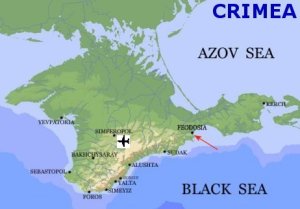 On April 23, 2014 CBP’s Virginia McPherson advised international trade community that products from Crimea, marked as “Product of Russia,” “Made in Russia,” “Contents Made in Russia” can be subject to additional 10% marking duties due to violation of 19 U.S.C. § 1304. See CSMS #14-000236 (stating “[g]rowth, production, or manufacture of a good in Crimea is growth, production, or manufacture of a good in Ukraine.”). With CSMS #14-000236 CBP joined OFAC’s critique circle that expresses the discontent of our (U.S.) executive branch views over political situation in Crimea. My colleagues done a good analysis on OFAC’s expression of unhappiness with Russia. See e.g. Steptoe’s publication here, or Mr. Burns article here. Here, CBP’s Virginia McPherson statements invite review of the administrative precedent and analysis, as Ms. McPherson’s address offers only conclusive words with very little reasoning.
On April 23, 2014 CBP’s Virginia McPherson advised international trade community that products from Crimea, marked as “Product of Russia,” “Made in Russia,” “Contents Made in Russia” can be subject to additional 10% marking duties due to violation of 19 U.S.C. § 1304. See CSMS #14-000236 (stating “[g]rowth, production, or manufacture of a good in Crimea is growth, production, or manufacture of a good in Ukraine.”). With CSMS #14-000236 CBP joined OFAC’s critique circle that expresses the discontent of our (U.S.) executive branch views over political situation in Crimea. My colleagues done a good analysis on OFAC’s expression of unhappiness with Russia. See e.g. Steptoe’s publication here, or Mr. Burns article here. Here, CBP’s Virginia McPherson statements invite review of the administrative precedent and analysis, as Ms. McPherson’s address offers only conclusive words with very little reasoning.
In T.D. 97-16, CBP (then called Customs Service) offered a better reasoning of country of origin marking for products that were made in places of political uncertainties. Case study concerned West Bank and Gaza. Following were the major principles that CBP used for guidance in T.D. 97-16 and 95-25:
- CBP gives a great deal of deference to the State Department, which “requests” CBP to accept country of origin marking that the State Department follows.
- Prior to adopting State Department recommendations, CBP notifies the public through Federal Register (i.e. administrative messages may not suffice).
- CBP can issue a country of origin marking ruling, which has not been made for Crimea as of this writing.
- CBP does not adopt State Department recommendations in blind, but provides a rationale for the joint action. The rationale includes consideration of the following principles:
- Whether the territory in question is “one area for political, economic, legal and other purposes.”
- Whether the political bodies of the territory in question have asked the U.S. to accept the country of origin marking “so as to reaffirm the territorial unity.”
- Whether dominant political power in the region has agreed to transfer certain powers and responsibilities to the territory in question, such as administration of territory’s own tariff revenue collection and other customs matters. See T.D. 95-25 (“Israel has agreed to transfer certain powers and responsibilities to the Palestinian Authority”).
- Whether labeling of goods “will provide American purchasers with important information indicating their origin.” Id.
- Whether the “occupied” territory is subject to control of the “occupying” entity. Id. citing T.D. 49743 dated November 10, 1938 (“Customs held that as a result of a change in jurisdiction from Czechoslovak to German in the Sudeten areas which were under German occupation, products which were manufactured in those areas and were exported on or after the date of German occupation were considered products of Germany for purposes of country of origin marking.”).
- Whether the U.S. recognizes territory as “post-occupation independent.” Id. (“Customs stated that the U.S. Department of State advised that the boundaries of Czechoslovakia had been reestablished as they existed prior to the date of the occupation by Germany, and that the United States recognized Czechoslovakia as an independent state.”)
Consideration of these factors complicates the picture summed up by CBP’s Virginia McPherson in one sentence: “Growth, production, or manufacture of a good in Crimea is growth, production, or manufacture of a good in Ukraine.” A detailed analysis of aforementioned factors can lead one to conclude that Russia, as well as Ukraine, qualify for 19 U.S.C. § 1304 country of origin marking. The lack of Federal Register notice, and the failure of CBP officials to adhere to rationale that it historically gives, may serve as a reasonable justification for Russia being the country of origin. Many LawCustoms visitors, however, are practically minded individuals who seek to understand the influence of political climate on CBP, rather than to push their own views. Perhaps the best solution would be to create a distinct ISO Code for Crimea, like one for Falklands (FK) and accept that as a country of origin. To date, neither International Standards Organization, nor HTSUS have such separate designation. In closing, I would like to thank Ms. McPherson for making this discussion possible, because with her message, international trade community can now structure their Crimean transactions with more clarity.
